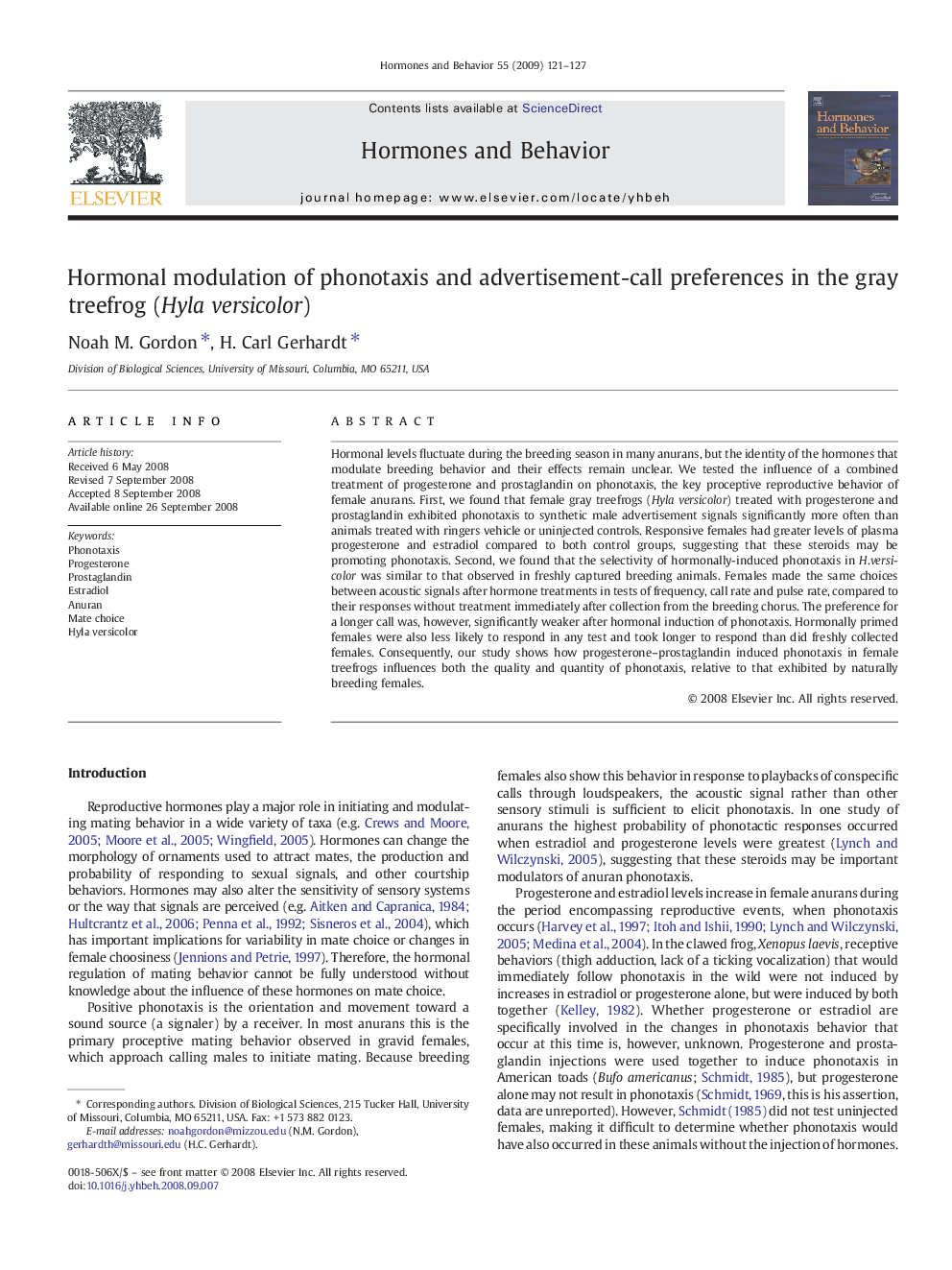| Article ID | Journal | Published Year | Pages | File Type |
|---|---|---|---|---|
| 323246 | Hormones and Behavior | 2009 | 7 Pages |
Hormonal levels fluctuate during the breeding season in many anurans, but the identity of the hormones that modulate breeding behavior and their effects remain unclear. We tested the influence of a combined treatment of progesterone and prostaglandin on phonotaxis, the key proceptive reproductive behavior of female anurans. First, we found that female gray treefrogs (Hyla versicolor) treated with progesterone and prostaglandin exhibited phonotaxis to synthetic male advertisement signals significantly more often than animals treated with ringers vehicle or uninjected controls. Responsive females had greater levels of plasma progesterone and estradiol compared to both control groups, suggesting that these steroids may be promoting phonotaxis. Second, we found that the selectivity of hormonally-induced phonotaxis in H.versicolor was similar to that observed in freshly captured breeding animals. Females made the same choices between acoustic signals after hormone treatments in tests of frequency, call rate and pulse rate, compared to their responses without treatment immediately after collection from the breeding chorus. The preference for a longer call was, however, significantly weaker after hormonal induction of phonotaxis. Hormonally primed females were also less likely to respond in any test and took longer to respond than did freshly collected females. Consequently, our study shows how progesterone–prostaglandin induced phonotaxis in female treefrogs influences both the quality and quantity of phonotaxis, relative to that exhibited by naturally breeding females.
